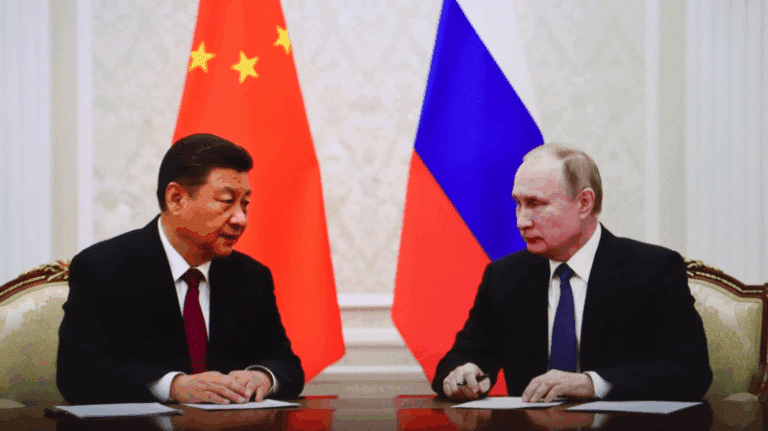This roundtable report reflects the authors’ understanding of key points made in the course of the discussion. It does not necessarily represent the views of the Center on Global Energy Policy. The summary may be subject to further revision.
Contributions to SIPA for the benefit of CGEP are general use gifts, which gives the Center discretion in how it allocates these funds. More information is available on our Partners page. Rare cases of sponsored projects are clearly indicated.
On November 22, 2019, the Paris Energy Club and the Center on Global Energy Policy convened a joint workshop at Columbia University’s Global Center at Reid Hall in Paris. The workshop focused on the intersection of energy and geopolitics. It provided an opportunity for a senior grouping of energy and finance executives, researchers, environmental advocates, and government officials to exchange perspectives in a not-for-attribution setting on market status and trends in conventional energy, scenarios for transatlantic energy relations, and means to close the gap between rhetoric and reality in regard to climate change policies. This summary highlights main points of the discussion, which took place under the Chatham House Rule.
Oil Markets: Fragile Balance or a New Paradigm
Participants noted the uncertainties around the current oil market outlook and broader market narrative. In the near term, the market for crude oil appears in balance, while the market for total liquids (including both crude and natural gas liquids [NGLs]) is heavily in surplus. In the past, crude and NGL supply dynamics were closely aligned, so the difference between crude and liquids balances did not matter much. But US shale introduced a huge wave of NGL supply to the market that the Organization of the Petroleum Exporting Countries (OPEC) cannot control, so depending on OPEC policy, crude and NGL balances can now diverge to a significant degree and muddle the market narrative accordingly. Overall, participants noted that the lower-for-longer narrative around oil prices still enjoys great currency. The back end of the futures curve appears anchored at around $55 per barrel, which may reflect either continued perceptions of supply abundance (thanks to US shale) or long-term concerns about peak oil demand amid the energy transition, or both.
Among the many uncertainties facing the oil market, one speaker advocated as an organizing principle that one pay greatest attention to factors and scenarios that could alter the supply-demand balance by at least 1 million barrels per day in the near term. Using such a filter, one would watch with particular care considerations such as US policy toward Iran, OPEC+ policy on oil supply, and US shale production. The potential for a recession in the United States in 2020 was viewed as one of the major risks on the demand side.
Oil analysts noted that oil stocks no longer seem capable of moving prices materially, and the current market appears to be comfortable even with low levels of inventories. One of the possible explanations (beyond price-responsive US shale and excess supply capacity) may be the increased transparency about global oil stocks that innovative companies and technologies (e.g., remote sensing, artificial intelligence, and machine learning) bring to the market. Attendees said spare capacity was not a concern for markets at the moment either, as US shale and commercial inventories provide enough comfort for market participants about supply availability in times of low spare capacity in OPEC countries.
Debate arose over the current state of the US exploration and production sector and the longer-term outlook for US shale supply. Participants noted the poor returns by the domestic exploration and production sector and the loss of interest by public investors in the sector as a whole. But there was disagreement about how significant a constraint capital availability will be to US shale supply growth over the longer term. On the other hand, there was widespread recognition that US shale producers will have to run fast to stand still (let alone to increase production) due to the steep initial decline rates in shale plays. This reality means that capital discipline could have a more severe effect this time around than during the previous down cycle a few years ago. One speaker emphasized that the growing footprint of the oil majors in US shale can significantly change the face of the industry, generally making it less prone to booms and busts in the future.
Concerns around the flaring and venting of associated natural gas can also have a significant influence on the outlook. Environmental, social, and governance considerations are already driving some of the oil majors to scale back well completions in the Permian Basin for fear of public backlash against flaring, despite the Texas regulator’s reluctance to limit flaring for the time being.
The International Maritime Organization sulfur cap phases out high-sulfur fuel oil from marine transportation starting in 2020. Although this changeover had previously been feared as a significantly disruptive event, the refining system and distribution market participants have adjusted surprisingly smoothly, attendees noted, so the situation may prove in the end to have been overblown in prospect.
Gas Markets: What Role for Europe in a Globalizing Arena?
Europe clearly played a lead role in absorbing the new liquefied natural gas (LNG) supply in 2019: LNG imports to the United Kingdom, the Netherlands, and Greece tripled, and shipments to France, Spain, and Italy grew by more than 50 percent. Participants agreed that a short disruption of gas supply was a possibility at the New Year due to the still-pending (at the time of the workshop) resolution of the Ukraine/Russia gas transit dispute. However, most agreed that European gas security would not be affected if a disruption did occur, because gas storage was at its highest level for the last eight years, and European gas system flexibility had also increased markedly since the last disruption in 2009. One participant pointed out, however, that such flexibility is decreasing due to insufficient investment in storage.
One participant believed that an agreement between Russia and Ukraine could result in lower gas prices in Europe, providing an opportunity to substitute coal with natural gas. On the other hand, the absence of an agreement—if that occurred—could negatively affect public perception of overall gas security.
Some of the natural gas absorbed by Europe in 2019 was sourced from the US, and one participant asserted that US LNG was sold at distressed prices to meet the US-European Union (EU) policy to increase US LNG in Europe. Another stated that LNG was sold at market prices; after all, both gas sellers and purchasers were companies, not political actors.
There were also questions about the growth of US shale gas supply, with one participant stating that US shale gas production growth has always been higher than expected. Another participant argued that the shale gas environment has changed and that investors now want to see some returns on their shale investments.
The diversification of supply sources remains a key priority for Europe in the short and medium term. The longer-term role of gas in the European energy mix, however, has increasingly come into question as Europe aims to become climate neutral by 2050, in part by ambitiously cutting CO2 emissions.
As the EU moves toward its 2050 targets, natural gas is expected to be replaced by a mix of low- and zero-carbon gaseous fuels, such as biogas, biomethane, hydrogen (blue and green), and synthetic methane. Biogas and biomethane are currently the most commercially ready alternatives to natural gas and require no major infrastructural upgrades. However, their production will be limited by the availability of feedstock and local contexts.
The production of large volumes of hydrogen as a natural gas substitute and the development of a hydrogen infrastructure is difficult to imagine without the commercialization first of so-called blue hydrogen. Blue hydrogen is sourced from natural gas and is produced in concert with carbon capture and storage. Green hydrogen is produced using renewable energy to electrolyze water, so its development will require high volumes of inexpensive renewable electricity and further cost reduction of electrolysis technology.
In general, the demand for low- and zero-carbon gaseous fuels will be determined by costs, convenience, availability, acceptability, and the infrastructure choices of the EU and its member states, as some gas networks need to be adapted. Given the greenhouse gas targets, demand projections for gas by the European Commission for 2050 show significant differences. The higher the assumed 2050 greenhouse gas emissions reduction target, the lower the projected demand for natural gas. One participant noted that Europe is quite unique in this regard, since many countries, such as China, consider natural gas a green gas and plan to give gas a central role in their transition plan.
US Energy and Foreign Policy: Scenarios for Transatlantic Energy Relations
The 2020 US presidential election loomed large throughout the discussion. The outcome of the election, and the additional possibility of a win by a Democratic candidate with a stated objective to ban fracking, represent perhaps the greatest uncertainties in the US domestic energy sector. Some participants, however, emphasized the limits on what even a determined president could do to curb hydrocarbon production in the United States. Absent legislative action in Congress to ban fracking, which is highly unlikely, the president has the greatest degree of authority in limiting new leasing on public lands—and even this authority could be challenged and overturned in court. The federal government’s options are much more constrained in restricting oil and gas development in existing leases and on private lands. A determined administration could attempt to throw sand in the gears by using existing authorities under the Clean Water Act, for example, but such actions would face long legal battles before they could be enacted.
One participant believed it extremely unlikely that a Democratic administration would try to revoke existing LNG export permits under the pretext of a national emergency (even though this might be a tempting option if one wished to reduce hydrocarbon production and domestic gas prices simultaneously), because the courts or Congress would quickly reverse such an economically harmful policy. The negative employment effects of curtailed hydrocarbon development would also weigh heavily in the debate on both sides of the political spectrum, and in the view of some participants, concerns about job losses could ultimately temper plans to undo the US shale revolution.
While a new Democratic administration could significantly alter the tenor of US energy policy at home, US foreign policy and foreign energy policy may change less than proponents of free trade, globalization, and the US-led liberal international order might hope. Participants thought opposition to free trade, the US withdrawal from the Middle East, and the heavy use of economic sanctions might continue under a Democratic administration. Such an outcome would also likely result in the US rejoining the Paris Agreement and reengaging on multilateral climate diplomacy, according to attendees.
Some participants lamented the US retrenchment from the Middle East, which started before the Trump administration and will likely continue after it, and noted that the US is now seen as an unpredictable ally that cannot be counted on in the region. The US may have lost its credibility with both Iran and Saudi Arabia, and—as a result—will face a much harder time getting a new nuclear deal with Iran, which Saudi Arabia and its Gulf Cooperation Council allies will likely more fiercely oppose than they did the Joint Comprehensive Plan of Action in 2015.
Participants noted that gas supply security still provides a useful opportunity to deepen transatlantic relations, although others cautioned that the role of US LNG in European supply security should not be overemphasized. This year, for example, the volume of Russian LNG shipments from the Yamal terminal exceeded US LNG imports to Europe, even though the rise of Russian LNG deliveries received less fanfare than the sharp rise of US LNG inflows amid a global LNG market oversupply.
Climate Change Policies: Ambition vs. Reality and How to Bridge the Gap
The rise of populism, economic nationalism, and geopolitical rivalry between the US and China present new challenges to global climate action, which had heretofore been built on global cooperation and multilateral climate diplomacy. In the face of such change, rethinking how global climate policy can be made to work in an age of populism and deglobalization is an urgent matter.
A significant part of the discussion focused on the role of natural gas in the energy transition. Thanks to its specific characteristics (superior air quality attributes compared to coal and oil) and because in some regions natural gas is cheaper than coal, switching from coal to gas has contributed to reducing carbon dioxide emissions in regions with significant gas consumption.
One participant noted that not all natural gas molecules are equal and that the greenhouse gas footprint (from upstream to downstream) will have to be addressed by importers if they want their gas to be allowed inside the EU in a few years’ time.
Another participant noted that it is important to highlight the difference between climate change and the energy transition. While the latter leads ultimately to a fossil fuel–free energy mix, the urgent need to address climate change will require the use of the cleanest fossil fuel (natural gas) and carbon capture, utilization, and storage (CCUS) for some time.
While electrification is making good progress, a lot of CO2 is emitted from sectors that are not that easy to electrify. CCUS is the only clean technology capable of decarbonizing major industrial sectors such as steel, cement, pulp and paper, refining, and petrochemicals. More efforts should be made to ensure deployment of such technology.
Carbon pricing is also important, as it makes investments in low-carbon or carbon-free technologies attractive and ensures fossil fuels are used efficiently. Article 6 of the Paris Agreement has the potential to foster an international market for CO2 emissions credits.
While the effect of energy policies implemented by governments remains the driving force of the energy transition, industrial players have an important role to play. In the oil and gas sector, initiatives such as the Oil and Gas Climate Initiative provide an example of what industry can achieve through collaboration. Actions aiming to reach zero-carbon electricity consumption, improving energy efficiency in all segments and operations, avoiding methane leakage and flaring, deploying alternative feedstocks in refining, deploying CCUS, and so on provide decarbonization opportunities that should be given the highest priority in the petroleum sector, according to one attendee. One participant reminded the audience that more than 50 percent of CO2 emissions in refineries are linked to hydrogen generation. Therefore, making hydrogen green will provide a lot of CO2 reduction.
Last but not least, it was noted that the long-term funding of innovation plays a key role in making clean energy progress, and it needs more attention from stakeholders.





